|
|
INTERACTION WITH THE SCIENTISTS OF KUDANKULAM NUCLEAR POWER PROJECT, KUDANKULAM, TIRUNELVELI, TAMIL NADU
22-09-2006 : Kudankulam, Tirunelveli
Energy Independence
"Small aim is a crime"
I am indeed delighted to be in Kudankulam Nuclear Power Project, a project of Nuclear Power Corporation of India. Department of Atomic Energy has influenced Indian society in multiple fields. I understand that presently the total nuclear power generation capacity is 3900 MW using 16 nuclear reactor. I am happy to know that the nuclear power reactors are working with an average annual availability factor of 89%. This was made possible by adopting innovative fuel optimization and outage management techniques in operating stations. This is a notable contribution of the Nuclear Power Corporation towards high quality operation and maintenance of power systems in the country. I extend my greetings to all the scientists, technologists and staff. I am sure, you will excel in operational performance in Kudankulam Power Plants. When I was thinking what thoughts I can share with you since you are in the business of energy, I would like to give you a profile what should be the energy mix for India between now to 2020 and 2030. Hence, I have selected the topic "energy independence".


Energy Independence
In the field of energy, many innovations are taking shape. The world energy forum has predicted that fossil based oil, coal and gas reserves will last for less than ten decades. The energy is an important parameter for development. Continuously increasing cost of oil sourced from fossil material prompted many groups in the world to seriously consider the possible energy options. Based on our study, I have discussed about Energy Independence as part of my Independence Day Address to the nation, on 15 August 2005. There, I mentioned that Energy Independence has to be our nation?s highest priority. Our target is to achieve Energy Security by 2020 leading to Energy Independence by 2030 and beyond. Of course there have been many discussions nationally as well as internationally on this subject. I would like to suggest certain actions to be taken on the energy missions for contributing towards energy independence in India particularly it is relevant to atomic energy scientists and the team of Nuclear Power Corporation.
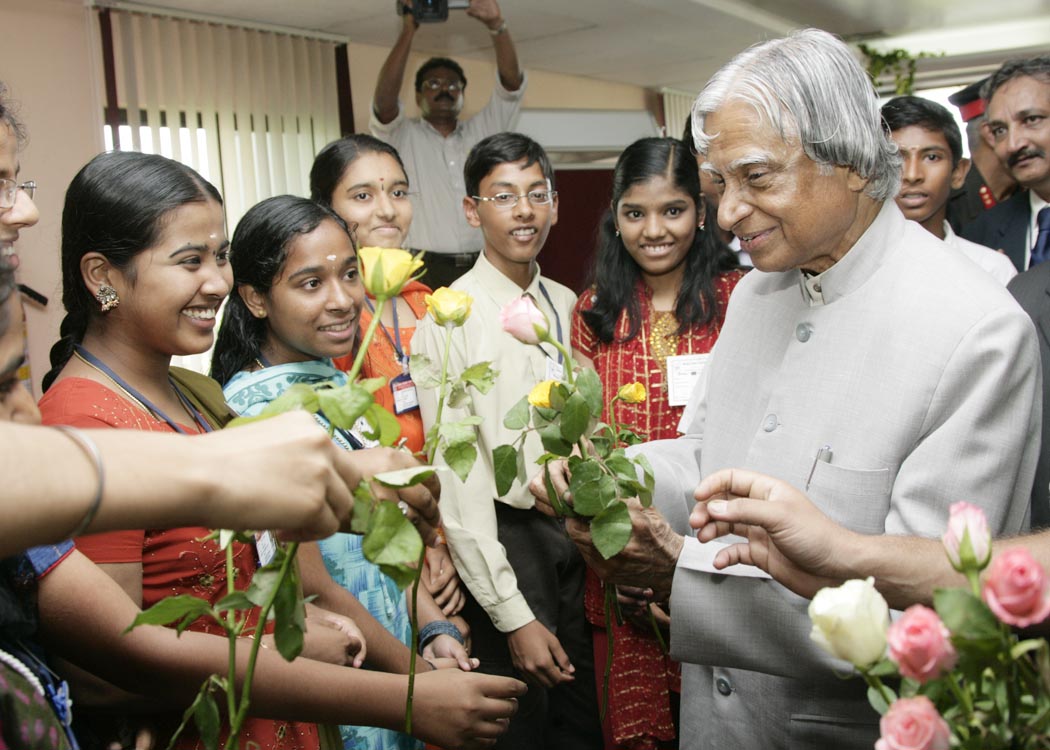

Structure of Energy Sources
Based on the progress visualized for the nation during the next two decades, the power generating capacity has to increase to 400,000 MW by 2030 from the existing 130,000 MW. This has been arrived at taking into account the use of efficient transmission and distribution system and minimization of other losses. Energy independence has got to be achieved through three different sources namely hydel capacity, nuclear power and non-conventional energy sources primarily through solar energy, apart from thermal power. The hydel capacity generated through normal water sources and inter-linking of rivers is expected to contribute an additional 50,000 MW. Large scale solar energy farms of hundreds of megawatts capacity in certain number could contribute around 55,000 MW. The nuclear power plants should have a target of 50,000 MW of power. The balance 115,000 MW has to be generated through the conventional thermal plants through coal, gas and other renewable sources of energy such as wind power, biomass, power through municipal waste and solar thermal power. The most significant aspect, however would be that the power generated through renewable energy technologies has to be increased to 25% against the present 5%. Let me discuss about the profile of renewable energy systems.
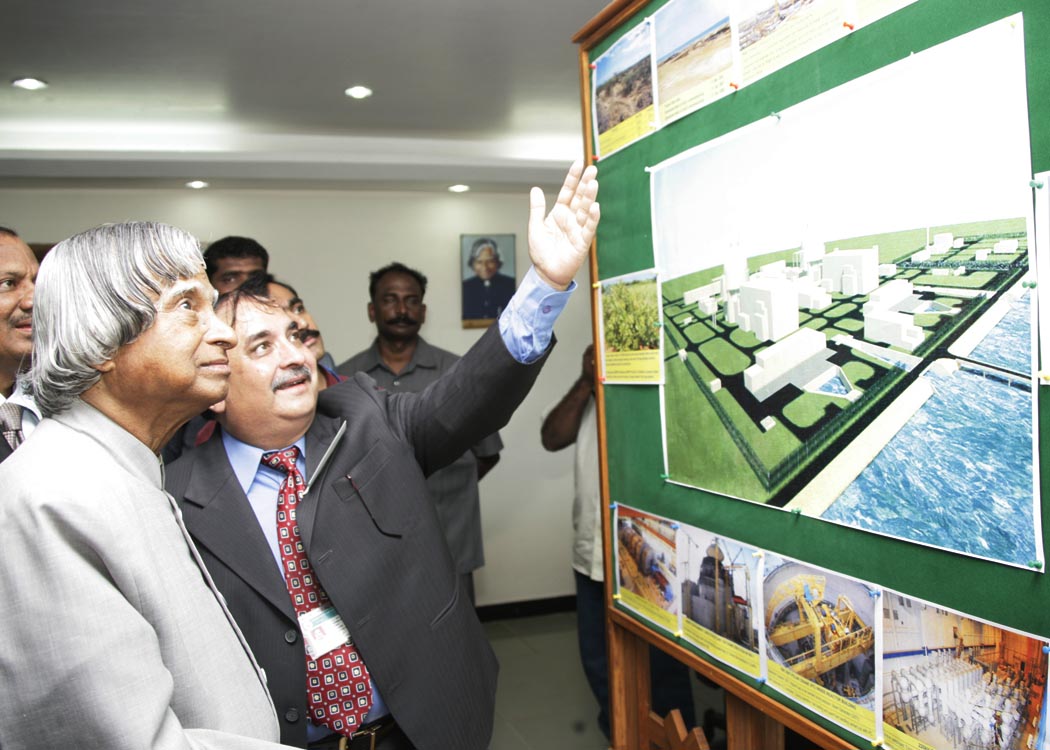
The energy mix for energy independence envisages use of four routes: (a) Hydel + Thermal till coal availability (b) Solar power using high efficiency CNT based SPV cells (c) Thorium based nuclear reactors (d) Bio-fuel for transportation sector.
As all of you can see the Department of Atomic Energy is required to provide 50,000 MWs of electric power before 2030 contributing to make India energy independent. Indigenously, we have built certain capacity for generating electricity through pressurized heavy water route. Let us look at some details which gives us the confidence to take up more challenging tasks and meet the national nuclear energy targets.
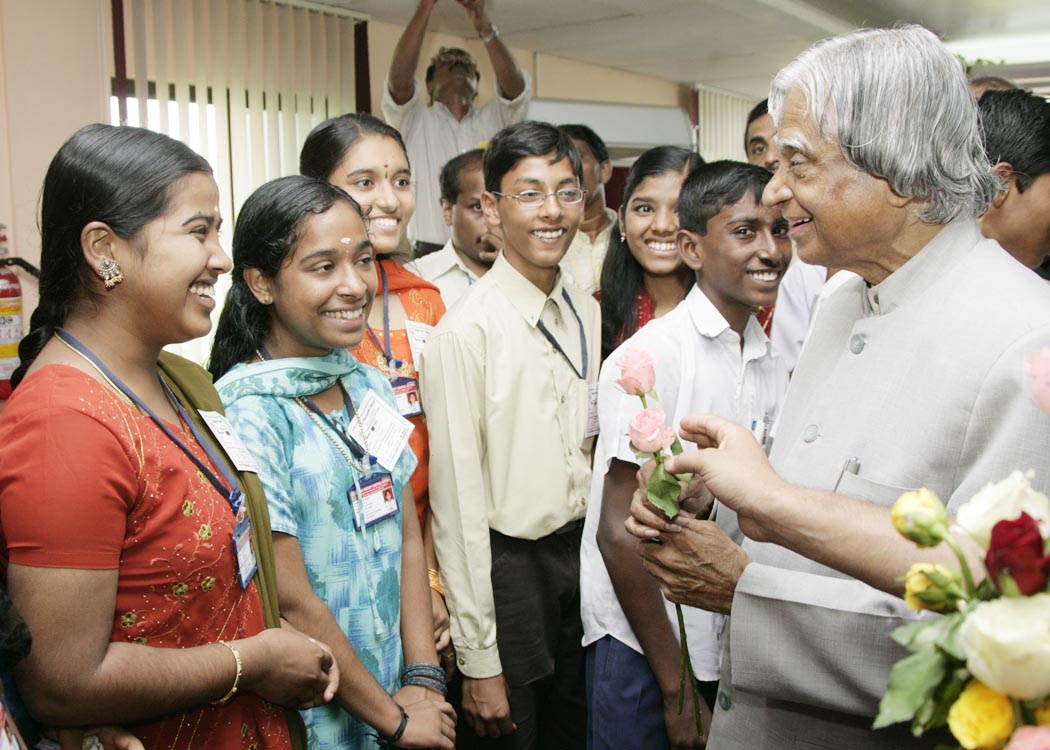

India?s first 540 MWe Pressurized Heavy Water Reactor
India?s first 540 MWe Pressurized Heavy Water Reactor (PHWR), built based on indigenous technology at Tarapur, Maharashtra became critical on 6th March 2005. It is the largest indigenously designed and built power reactor in the country. The commissioning of this nuclear reactor, has indeed established our technological and managerial leadership.
The project at Tarapur comprises of a twin-unit station of PHWR type, each of 540 MWe installed capacity and are being built adjacent to the existing two units of smaller size. The first concrete (Grade M-60) was poured on 8th March, 2000 and criticality has thus been achieved in less than 5 years.
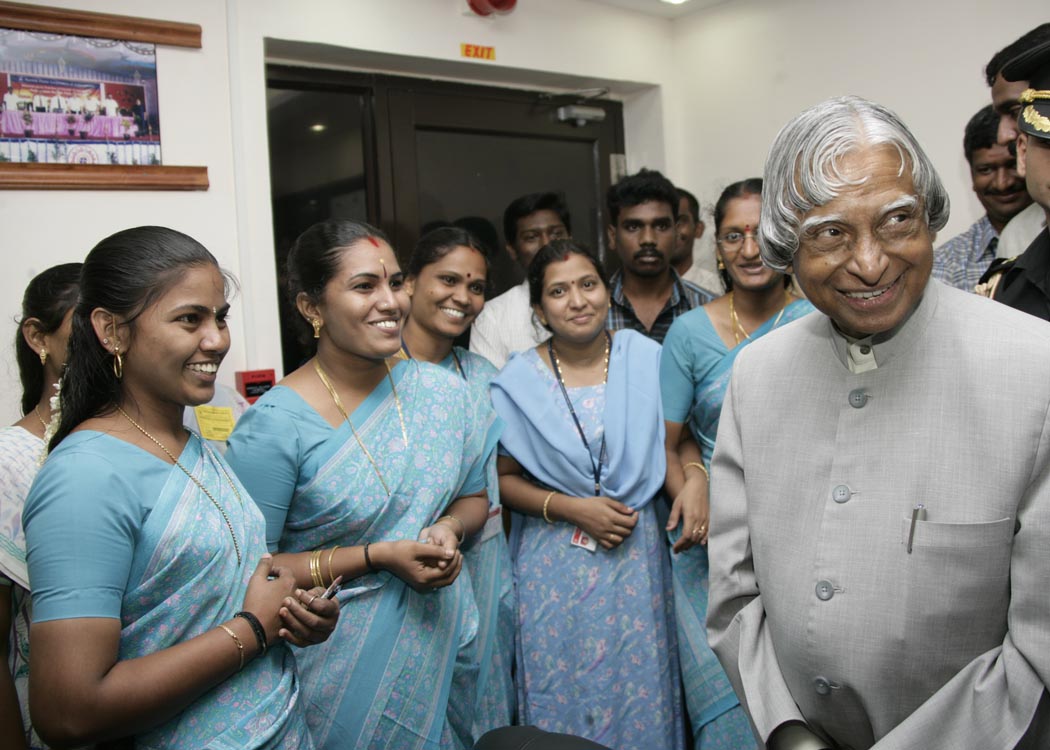
The design of the reactor incorporates all the basic features of the existing PHWRs. The safety features in the existing 220 MWe units, such as fast acting diverse independent shutdown systems, high pressure emergency core cooling systems, double containment, supplementary control room along with the safety objectives like redundancy diversity, avoidance of common cause failure have been incorporated in these 540 MWe units. However, extensive theoretical and experimental development followed by manufacturing was necessary for implementing these features. Apart from this, there have been additional design innovations, which were driven with the objective of maintaining and improving the indigenisation of nuclear power plant components. Certain equipments have been redesigned so that their manufacturing is within the capability of Indian industry.
Overall plant execution was done by contracting out packages of activities rather than single activities. This approach simplifies coordination, and therefore increases speed of execution of various works. This technological and project management experience will be useful for our future high-tech programme.
Completing of this project in a record time of less than 5 years is a testimony to the level of maturity that has been achieved by the Indian industry and the NPCIL. When I visited project site of Tarapur plant in 2001, I was very happy to see the engineers and staff of NPCIL working round the clock with the pride that they are going to build the first Indigenous 540 MWe power station. They have done it and India is proud of them. Similarly, now you are in the process of commissioning the first 2 X 1000 MW nuclear power plant using pressurized heavy water at Kudankulam. I am sure, through your technological capability, dedication and hard work, the plant will become critical in time during 2007 and very soon provide electricity to the grid. As known to the members of NPCIL, India has only limited uranium resources whereas we have plenty of thorium material available in the country. Hence, the focus of our nuclear scientist in the coming years has to be in the development of thorium based nuclear power plants.
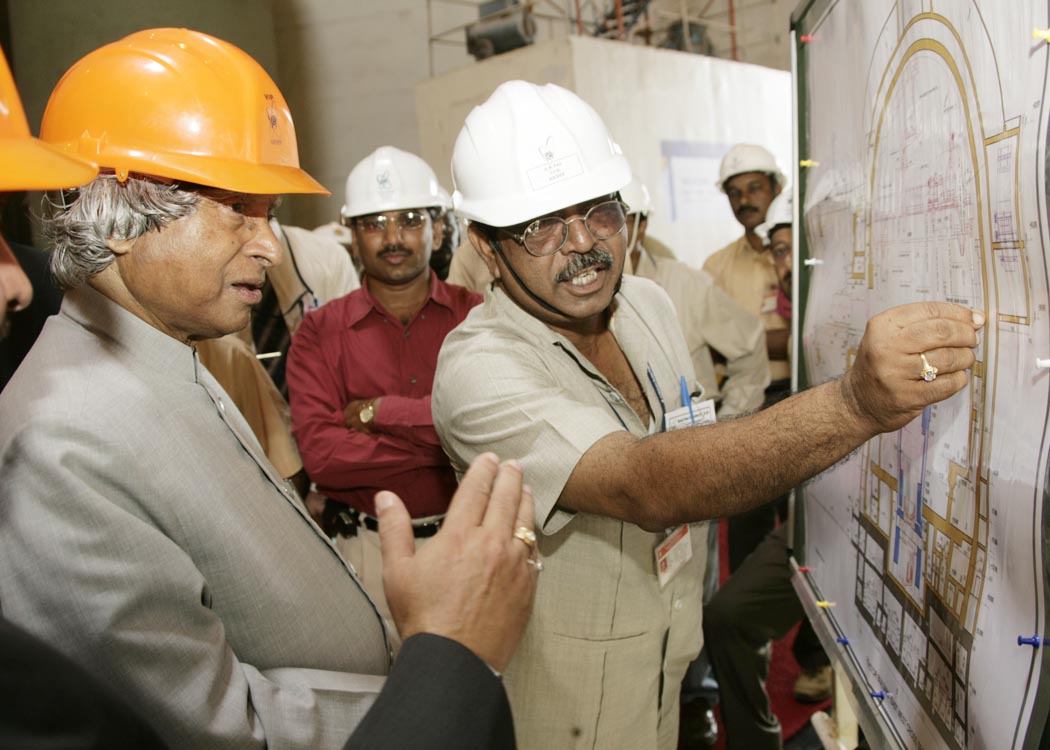

Efficient thorium based nuclear fuel
Going critical of fast breeder reactor which is in an advanced stage of construction, development of Advanced Heavy Water Reactor (AHWR) and Accelerator Driven System (ADS) technologies have to be pursued in an integrated way. There are many scientific and technological challenges.
Fast Breeder Reactors: Fast breeder reactors can make a significant contribution to India?s energy requirements, but the rate of increase in fast breeder reactor installed capacity has to follow a certain growth path as plutonium-239, the fuel for the fast reactors gets generated in nuclear reactors. Thus, the rate of new fast reactor capacity addition has to be determined by the rate at which plutonium can be bred. The breeding depends on the fast reactor design and the chemical form of plutonium fuel. Metallic fuel gives much higher breeding ratio whereas plutonium in oxide form gives a lower breeding ratio. So our basic research has to be on the development of metallic fuel on priority. It is only after we have established enough fast reactor capacity, we can shift to thorium based systems and continue to get power from thorium reactors for a long time.
Thorium Technologies: Country has already set up a facility for reprocessing thorium and has designed an Advanced Heavy Water Reactor (AHWR), which aims to derive two-third of its power from thorium and one third from plutonium generated from Fast Breeder Reactor (FBR). Implementation of the AHWR project and development of associated fuel cycle facilities will provide industrial scale experience in the handling of thorium. An important basic research area would be to develop reactor systems based on thorium wherein power derived from thorium can be increased and external input of fissile material can be minimized. It will definitely lead to early utilization of thorium in power production.
Accelerator Driven Systems: The other possibility for thorium utilization is through Accelerator Driven Systems (ADS). ADS have two main components: an accelerator and a reactor. A reactor system using only thorium as fuel cannot become critical as thorium is not a fissile material. To make it critical, an external supply of neutrons is needed. A ?spallation? source can provide an external source of neutrons to achieve criticality in an otherwise sub-critical system. The development of an appropriate proton accelerator is the first step towards the development of ADS. The research results will lead to building an accelerator and subsequently the use of accelerator for detachment of neutrons from heavy elements. Accelerator technology has many other applications. For example, accelerators are useful in health care for treatment of cancer and in basic research as tools to study structure of atom. Accelerators are also useful in the industry for chemical processing, where irradiation by accelerators can be used to improve the mechanical and electrical properties of cable insulation. How we can meet these research and development challenges?
I would like to recall two experiences. India?s nuclear programme has always been under technological denials for decades from many countries. Every one of the nuclear scientists and science leaders realized that the self-reliance is the most promising route. Nuclear scientists have always shown the country how nuclear technology can be used for increasing the agricultural produce, medical application and nuclear power generation. Let me also share one of my experiences when I was chief of Aeronautical Development Agency (ADA). It was 1998; India achieved a very important national milestone. This resulted in many nations imposing technology denials and economic sanctions. Particularly, the Light Combat Aircraft programme came to a halt because of collaborating countries breaking the agreements on the development contracts undertaken. I took an emergency meeting of the ADA Board and we formed a National Team for LCA control system with 20 members drawn from 7 organizations in the country with a two years project schedule. In 18 months, we realized a world class digital fly by wire control system for the LCA. Now, four LCA aircraft are flying and 5th one is getting ready for flight test. Cumulative flying hours logged by the 4 aircraft is over 500 hours. The batch production of LCA TEJAS is to commence. The message I would like to give to our nuclear scientists is:
"Nationally we have the best minds,
Enlist the national team,
The government and the people are with you,
Progress with your vast knowledge and experience,
you will succeed."

Conclusion
Since I am in the midst of young scientists of Kudankulam , I would like to administer an oath on Courage, if you all agree.
COURAGE
Courage to think different,
Courage to invent,
Courage to discover the impossible,
Courage to combat the problems
And Succeed,
Are the unique qualities of the scientist.
As a scientist of Nuclear Power Plant,
I will work and work with courage to achieve
Success in scientific discoveries and
Scientific achievements
My best wishes to all the scientists and technologists of Kudankulam Nuclear Power Project for success in their mission of providing all the technological and scientific support for making India energy independent by 2030.
May God bless you.
<<Back
|
|